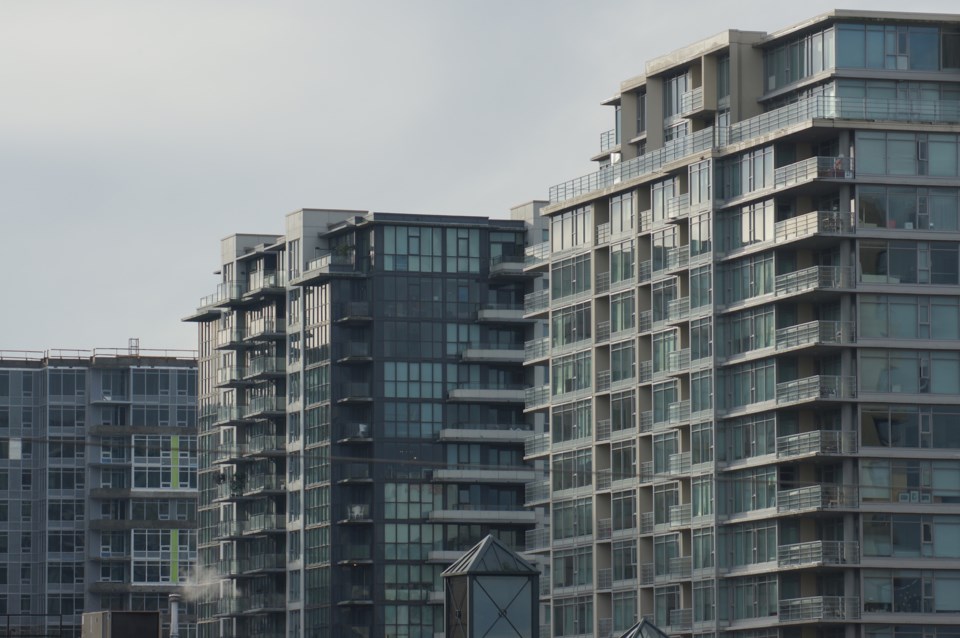The Richmond School District is abandoning plans to build a new City Centre elementary school in downtown Richmond as it wrestles with the reality that 39 schools — and not the 25 previously thought — require some seismic upgrades. Furthermore, to deal with ageing facilities, the district is considering selling off excess land.
After dozens of condos have been built in the downtown Richmond area over the past decade, with no new school planned, district staff are now recommending expanding existing schools that surround the area, rather than purchase a new property in the Lansdowne Centre area, as had been previously explored.
Board of Education chair Eric Yung said the district had to move forward with a plan, “to have something,” but this is not “the end of the conversation” for a new City Centre school.
Initial plans saw the district transferring $41 million from the 2013 sale of Steveston High to a City Centre school purchase.
The problem now — according to the most recent long-range facilities plan approved by the Board of Education Wednesday — is that a two-acre parcel of land will cost $60 to $175 million. The district notes there are no guarantees from the Ministry of Education to fund such a venture.
Community activist Kim Nowitsky, of Richmond Schools Stand United, a parent-led group dedicated to seismic upgrades in Richmond, chalked the problem up to poor city planning and delays by the provincial government to buy land.
New schools are generally funded out of general tax revenue. The City of Richmond does not demand space for schools as part of community amenities; only small fees are charged for each new unit. For instance, a high density development is charged a “school acquisition rate” of $463 per unit.
“In situations like the downtown core that proves challenging,” said Yung. “There’s no incentive for developers to speak to the board.”
The district is also having to build a new school at Dover Park, nearby the Oval Village developments, which it intends to proceed with, at a price tag of $16.8 million.
By 2023, four schools in the City Centre periphery are projected to be well over capacity. The district, pending ministry funding, is planning to expand permanent capacity at Brighouse (100 students, $4.2 million), Talmey (75 students, $2.5 million) and Cook (100 students, $3.1 million).
Adding such spaces will relieve what is expected to be a 1,132 space shortage by 2032 in the City Centre.
But Nowitsky fears many students will end up in portables and Kindergarten enrollment will be shut down for new, in-catchment families, as is presently the case at four other schools.
Meanwhile, the district has identified 15 schools to seismically upgrade over the next five years, at a cost of $176 million. Plans for four schools (Ferris ($6.2 million); Tomsett ($9.5 million); Mitchell ($9.7 million); and Steves ($11.3 million)) have already been submitted to the ministry for final approval.
Yung said it’s unlikely to see shovels in the ground next school year but he expects the four schools to be approved “very soon.”
The district increased the number of schools identified for upgrades after a round of site re-assessments in 2017 that discovered more problems with ground liquefaction during a major earthquake. Another round of assessments for the 15 schools is planned to be completed this summer, which should finalize costs, according to Yung.
School repairs are approved under a step by step program with the ministry. Five-year capital plans are submitted and, if approved, sent to planners to prepare a report and funding agreement, followed by construction.
This year, with the intention of speeding up the process, the ministry set up a special project office of district staff to liaise with the ministry over seismic upgrades.
Minister of Education Rob Fleming told the Richmond News, via email, “the project office is currently working on a number of business cases, and I anticipate some more project approvals this fall.”
When asked what his plans are for the City Centre, Fleming said the district “will have to work together on identifying projects to prioritize for moving forward.”
Now a minister for one year, Fleming maintained his plan was accelerating the work required in Richmond, including a $10.7 million renovation to Boyd secondary.
Meanwhile, the district is also coping with limited space at its administration building on Granville Avenue. The 35-year-old facility is a high seismic risk and lacks sufficient parking.
The district reports having 73 parcels of land totalling 156.9 hectares. Of this, 15 parcels totalling 6.1 hectares is not used for school operations. Staff recommend disposing of surplus land to create capital reserves for facility upgrades. The report specifically targets the former Kilgour elementary site, presently leased to the Conseil Scolaire Francophone de la Colombie-Britannique (CSF).
Facility planning challenges presented to the district also include enrollment management. Whereas six westside schools are running at below 60 per cent capacity, the aforementioned City Centre schools are overcapacity. As well, Hamilton elementary will be overcapacity by 2025.
The district intends to deny new transfer requests and new international student registration requests. This year (2017) the district accepted more international students than ever — 1,021.
Since 1998, when enrolment was at 22,773, overall enrolment to 2017 has declined 14.4 per cent. By 2032 it is expected to rebound 11.5 per cent (to 21,738).



